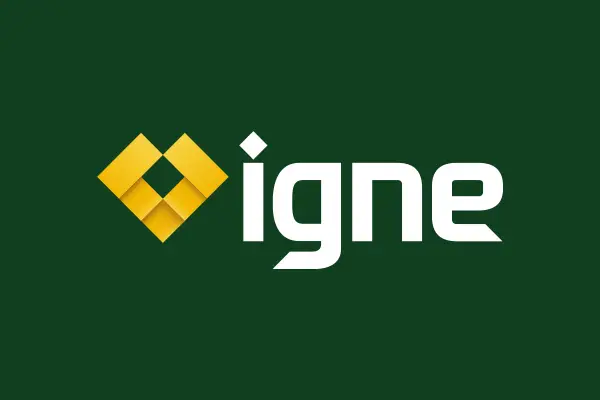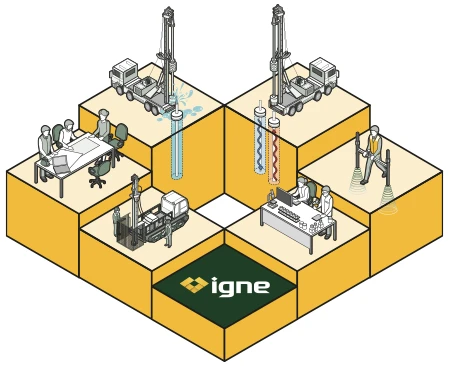

BIM & Revit Modelling
Building information modelling (BIM) and Revit modelling are powerful digital processes that provide comprehensive, 3D representations of a building or infrastructure project.
About
What is BIM & Revit Modelling?
BIM is a collaborative process for planning, designing, constructing, and managing buildings and infrastructure projects. It utilises data-rich models that reflect every detail of a building or structure, allowing all stakeholders—from architects and engineers to project managers—to share, analyse, and make informed decisions throughout the project lifecycle.
Revit, a specific software developed by Autodesk, plays a central role in the BIM process. It’s particularly popular for architectural design, structural engineering, and mechanical, electrical, and plumbing (MEP) modelling.
Revit enables the creation of 3D building models that integrate structural data, enabling precise design, analysis, and visualisation. Using BIM and Revit together allows for enhanced coordination, accuracy, and insight, ensuring projects stay on track, on budget, and aligned with stakeholders’ goals.

Useage
Why are BIM & Revit Modelling Useful?
BIM and Revit modelling are invaluable for multiple reasons:
Enhanced Collaboration
BIM and Revit provide a single source of information, streamlining collaboration across various teams. Designers, architects, engineers, and contractors can work together more effectively, reducing the likelihood of miscommunications or oversights.
Reduced Errors & Risks
BIM's data integration capabilities mean that clashes or issues can be identified and resolved early in the design phase, before they become costly site problems. Revit enables these clash detections and error checks, ensuring high levels of accuracy in structural and service placement.
Efficient Project Management
The integrated data model used in BIM allows for easy tracking of project milestones, material requirements, and timelines. Project managers can monitor progress in real-time, helping to maintain budgets and meet deadlines more effectively.
Sustainability
BIM supports sustainable building practices by analysing and predicting energy use, material requirements, and overall environmental impact, enabling teams to make eco-friendly choices and reduce waste.
Trust
Why Choose Igne for BIM & Revit Modelling?
Igne offers a comprehensive understanding of ground conditions, environmental aspects, and structural attributes, positioning us as a leader in BIM and Revit modelling for the property, infrastructure, and construction industries. Our experience spans across all sectors, including residential, retail, commercial, and industrial, with projects ranging from single developments to extensive, multiphase builds.
When you choose Igne, you gain access to:
Specialist Knowledge
We bring deep expertise in geospatial, geotechnical and materials testing, providing a strong foundation for BIM models that incorporate not only design details but also ground and environmental factors critical to safe and effective construction.
Reliability
Igne prioritises accuracy and detail in all our modelling work, helping to ensure projects meet regulatory and safety standards, while minimising unexpected costs and delays.
Adaptable Solutions
We customise BIM and Revit models to reflect each project’s unique requirements. Whether it’s a commercial building or a complex infrastructure project, we tailor our approach to suit the specific demands of the site and the client’s vision.
By partnering with Igne, you’re investing in precision, expertise, and a commitment to sustainable, risk-free project outcomes.
Risks
What are the Risks of Not Using BIM & Revit Modelling?
Without BIM and Revit modelling, projects face multiple risks:
Increased Errors & Rework
Without a centralised model, teams may work with outdated or incorrect information, leading to construction errors, clashes, and costly rework on site.
Higher Project Costs
When issues arise that could have been identified in a BIM model, costs increase. Rework, material waste, and construction delays are common outcomes.
Delayed Project Timelines
Without BIM’s scheduling and progress-tracking capabilities, projects often experience delays as issues are discovered and resolved on the fly rather than pre-emptively addressed.
Reduced Sustainability
Without BIM's sustainability tools, it’s challenging to accurately measure environmental impact, leading to potential inefficiencies and increased waste.
Regulatory Non-Compliance
Many projects must meet specific BIM standards, particularly in public sector developments. Without BIM, there’s a risk of failing to meet compliance requirements, which could delay project approvals or result in penalties.
Benefits
The Benefits of BIM & Revit Modelling
While avoiding the risks is a primary motivator, BIM and Revit Modelling offer substantial benefits that extend beyond risk mitigation:
Enhanced Visualisation & Design Flexibility
With BIM and Revit, stakeholders can visualise every detail of the structure, providing a realistic preview of the project outcome. This enables designers to experiment with different design elements and solutions to optimise the final structure.
Efficient Use of Resources
BIM provides precise estimates for materials, labour, and equipment, reducing waste and ensuring resources are used efficiently. This precision is valuable for budgeting and resource allocation across project phases.
Informed Decision-Making
The data-rich models used in BIM give stakeholders valuable insights into project performance, enabling proactive decision-making at every stage.
Futureproofing
BIM provides a ‘digital twin’ of the building, which can be updated and used for maintenance, renovations, or expansions, supporting the asset’s long-term management.
Increased Competitiveness
Projects that leverage BIM and Revit often demonstrate higher levels of professionalism and foresight, improving client satisfaction and market competitiveness.
Process
How is BIM & Revit Modelling Data Processing Done?
BIM and Revit modelling data processing follows a structured workflow:
- Data Collection
Initial data, including architectural, structural, and environmental information, is gathered and digitised. Site conditions, ground investigations, and other contextual details are also integrated into the model. - Model Creation
Revit is used to build the 3D model, layer by layer, including all structural, MEP, and architectural elements. Detailed design parameters are applied, aligning with client specifications and regulatory standards. - Data Integration
Information from various sources, such as material properties, energy data, and sustainability metrics, is incorporated into the BIM model. - Clash Detection
The model undergoes clash detection, a process in which potential conflicts between structural elements are identified and addressed before construction begins. - Validation & Analysis
The model is validated against industry standards and specific project requirements. Analysis tools within Revit or other software can be used to assess energy efficiency, environmental impact, and overall design feasibility. - Ongoing Updates
As the project progresses, the BIM model can be continuously updated to reflect real-time changes, creating a live resource for project management and future maintenance.
Learn More
Frequently Asked Questions about BIM & Revit Modelling
- What is the difference between BIM and Revit?
BIM is a process involving the creation, management, and sharing of information about a building project. Revit is a specific software tool used within the BIM process, providing 3D modelling capabilities that support BIM’s collaborative framework.
- How accurate is BIM for project planning?
BIM models are highly accurate when created with reliable data. They significantly reduce errors and improve project planning accuracy through clash detection, resource estimation, and time management tools.
- Can BIM and Revit modelling be used for renovation projects?
Yes, BIM and Revit are invaluable for renovations, as they offer a ‘digital twin’ that reflects the structure’s current state, allowing for precise planning of modifications or additions.
- Is BIM mandatory for construction projects?
BIM is increasingly becoming a requirement, especially for public sector projects and large-scale developments. Many regulatory bodies recommend or mandate BIM to enhance project outcomes.
- How does BIM contribute to sustainability?
BIM supports sustainable design by enabling accurate energy use simulations, efficient material planning, and waste reduction, helping to achieve eco-friendly project goals.
The Next Step
To learn more about how Igne’s CAD & data processing services, including BIM & Revit modelling, can transform your project, explore our comprehensive range of solutions.
Contact Igne today to discuss your unique requirements and discover how our expert site investigation and geotechnical services can de-risk your project for long-term success.
